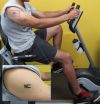(Press-News.org) More than half of emergency department patients age 65 and older who were seen at UNC Hospitals during an 8-week period were either malnourished or at risk for malnutrition.
In addition, more than half of the malnourished patients had not previously been diagnosed, according to a new study by researchers at the University of North Carolina at Chapel Hill. The study was published online August 13 by the journal Annals of Emergency Medicine.
"Malnutrition is known to be a common problem among older adults. What is surprising in our study is that most of the malnourished patients had never been told that they were malnourished," said Timothy F. Platts-Mills, MD, MSc, assistant professor of emergency medicine in the UNC School of Medicine and senior author of the study.
"Our findings suggest that identifying malnutrition among older emergency department patients and connecting these patients with a food program or other services may be an inexpensive way to help these patients," Platts-Mills said. "Older adults make more than 20 million visits to U.S. emergency departments each year. Our results add to a growing body of evidence that more needs to be done to develop the capacity of emergency departments to address the underlying conditions that impact health for older adults, particularly for those with limited resources."
The study included 138 adults age 65 and older who sought treatment in the emergency department at UNC Hospitals during an 8-week period. All were patients with no cognitive impairments, who were not critically ill and did not live in a nursing home or skilled nursing facility.
The nutritional status of each was assessed using the Mini Nutritional Assessment Short-Form (MNA-SF), a 6-item tool that combines body mass index and the patient's answers to questions about weight loss, decline in food intake, recent stress or disease, mobility and neuropsychological disorders. The results produce a score from 0 to 14. Malnutrition is defined as a score of 7 or lower while at risk for malnutrition is defined as a score from 8 to 11.
Sixteen percent were found to be malnourished and most of these (77 percent) said they had not previously been diagnosed as malnourished. Sixty percent were found to be either malnourished or at risk for malnutrition.
There were no significant differences in the prevalence of malnutrition between men and women, across levels of education or between those living in urban versus rural areas. However, the prevalence of malnutrition was higher among patients who reported having depressive symptoms, difficulty eating (due to dental pain, ill-fitting dentures, etc.) or difficulty buying groceries (due to lack of transportation, lack of money, etc.).
INFORMATION:
First author of the study is Greg F. Pereira, BSPH, a recent graduate of the UNC Department of Nutrition. Co-authors are Wesley C. Holland, Mark A. Weaver, PhD, research assistant professor in the UNC Gillings School of Global Public Health; and Cynthia M. Bulik, PhD, distinguished professor of psychiatry in UNC School of Medicine and nutrition in the UNC Gillings School of Global Public Health.
Many older emergency department patients are malnourished
2014-08-13
ELSE PRESS RELEASES FROM THIS DATE:
Reduction of tau protein improves symptoms in model of severe childhood epilepsy
2014-08-13
Researchers at the Gladstone Institutes have shown that reducing brain levels of the protein tau effectively blocks the development of disease in a mouse model of Dravet syndrome, a severe intractable form of childhood epilepsy. This therapeutic strategy not only suppressed seizure activity and premature death, but also improved cognitive and behavioral abnormalities that can accompany this syndrome.
Previous studies from this group have shown that lowering tau levels reduces abnormal brain activity in models of Alzheimer's disease, but this is the first demonstration ...
'Shape-shifting' material could help reconstruct faces
2014-08-13
SAN FRANCISCO, Aug. 13, 2014 — Injuries, birth defects (such as cleft palates) or surgery to remove a tumor can create gaps in bone that are too large to heal naturally. And when they occur in the head, face or jaw, these bone defects can dramatically alter a person's appearance. Researchers will report today that they have developed a "self-fitting" material that expands with warm salt water to precisely fill bone defects, and also acts as a scaffold for new bone growth.
The team will describe their approach in one of nearly 12,000 presentations at the 248th National ...
Dust -- and the microbes hitching rides on it -- influences rain, climate
2014-08-13
SAN FRANCISCO, Aug. 13, 2014 — Dusty air blowing across the Pacific from Asia and Africa plays a critical role in precipitation patterns throughout the drought-stricken western U.S. Today, a scientist will present new research suggesting that the exact chemical make-up of that dust, including microbes found in it, is the key to how much rain and snow falls from clouds throughout the region. This information could help better predict rain events, as well as explain how air pollution from a variety of sources influences regional climate in general.
She will present a talk ...
Rooting out skin creams that contain toxic mercury
2014-08-13
SAN FRANCISCO, Aug. 13, 2014 — As countries try to rid themselves of toxic mercury pollution, some people are slathering and even injecting creams containing the metal onto or under their skin to lighten it, putting themselves and others at risk for serious health problems. To find those most at risk, scientists are reporting today that they can now identify these creams and intervene much faster than before. They're speaking at the 248th National Meeting & Exposition of the American Chemical Society (ACS).
The meeting, organized by the world's largest scientific society, ...
Tattoo biobatteries produce power from sweat (video)
2014-08-13
SAN FRANCISCO, Aug. 13, 2014 — In the future, working up a sweat by exercising may not only be good for your health, but it could also power your small electronic devices. Researchers will report today that they have designed a sensor in the form of a temporary tattoo that can both monitor a person's progress during exercise and produce power from their perspiration.
The team described the approach in one of nearly 12,000 presentations at the 248th National Meeting & Exposition of the American Chemical Society (ACS), the world's largest scientific society, taking place ...
A new look at what's in 'fracking' fluids raises red flags
2014-08-13
SAN FRANCISCO, Aug. 13, 2014 — As the oil and gas drilling technique called hydraulic fracturing (or "fracking") proliferates, a new study on the contents of the fluids involved in the process raises concerns about several ingredients. The scientists presenting the work today at the 248th National Meeting & Exposition of the American Chemical Society (ACS) say that out of nearly 200 commonly used compounds, there's very little known about the potential health risks of about one-third, and eight are toxic to mammals.
The meeting features nearly 12,000 presentations on ...
Passengers who survived terrifying Air Transat flight in 2001 help psychologists uncover new clues about post-traumatic stress vulnerability
2014-08-13
Toronto, Canada – An extraordinary opportunity to study memory and post-traumatic stress disorder (PTSD) in a group of Air Transat passengers who experienced 30 minutes of unimaginable terror over the Atlantic Ocean in 2001 has resulted in the discovery of a potential risk factor that may help predict who is most vulnerable to PTSD.
The study, led by researchers at Baycrest Health Sciences, is published online this week in the journal Clinical Psychological Science – ahead of print publication. It is the first to involve detailed interviews and psychological testing in ...
Why seniors don't eat: It's complicated
2014-08-13
WASHINGTON – More than half of older adults who visit emergency departments are either malnourished or at risk for malnutrition, but not because of lack of access to health care, critical illness or dementia. Despite clear signs of malnutrition or risk of malnutrition, more than three-quarters had never previously been diagnosed with malnutrition, according to the results of a study to be published online tomorrow in Annals of Emergency Medicine ("Malnutrition Among Cognitively Intact, Non-Critically Ill Older Adults in the Emergency Department").
"We were surprised ...
Giant Amazon fish becoming extinct in many fishing communities, saved in others
2014-08-13
An international team of scientists has discovered that a large, commercially important fish from the Amazon Basin has become extinct in some local fishing communities.
The team compared mainstream bioeconomic theory — which policymakers have depended on in order to protect fish populations — with the lesser-known "fishing-down" theory, which predicts that large, high-value, easy-to-catch fish can be fished to extinction.
"Bioeconomic thinking has predicted that scarcity would drive up fishing costs, which would increase price and help save depleted species," said study ...
Gene that controls nerve conduction velocity linked to multiple sclerosis
2014-08-13
Philadelphia, PA, August 13, 2014 – A new study published in The American Journal of Pathology identifies a novel gene that controls nerve conduction velocity. Investigators report that even minor reductions in conduction velocity may aggravate disease in multiple sclerosis (MS) patients and in mice bred for the MS-like condition experimental autoimmune encephalomyelitis (EAE).
A strong tool for investigating the pathophysiology of a complex disease is the identification of underlying genetic controls. Multiple genes have been implicated as contributing to the risk of ...




